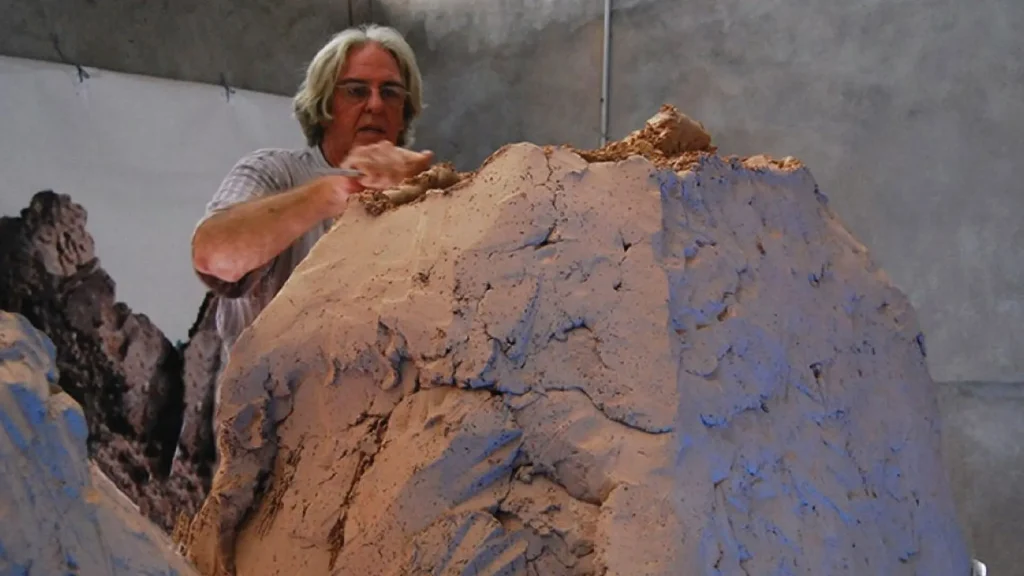One of India’s most renowned ceramic artists, Ray Meeker – an American by birth – was born in California in 1944. Meeker did his BFA in architecture and ceramics from the University of South California during the 1960s when he also met his partner and artist Deborah Smith before both moved to India in 1971. Meeker has exhibited his works at Nature Morte, New Delhi; NCECA, Houston and Architecture Biennale, Venice to name a few. He is also a member of the International Academy of Ceramics and has won a joint Outstanding Achievement award from NCECA, Houston (2018) for his nearly five-decade influence as a teacher and artist.
It was during Meeker’s student days that discourse around the status of ceramic as a medium of fine art was undergoing change, especially with the American artist Peter Voulkos at the Otis Art Institute forming the ‘Otis Group’ which challenged the potters’ tradition-bound attitudes and began to attract fine art gallery attention. Voulkos was enchanted by the plasticity and immediacy of clay and wanted to shift the understanding of ceramic from utilitarian craft to art – a shift that interested Meeker. It is this dimension of foregrounding the aesthetic nature of ceramic that has informed Meeker’s own career as well as teaching practice.
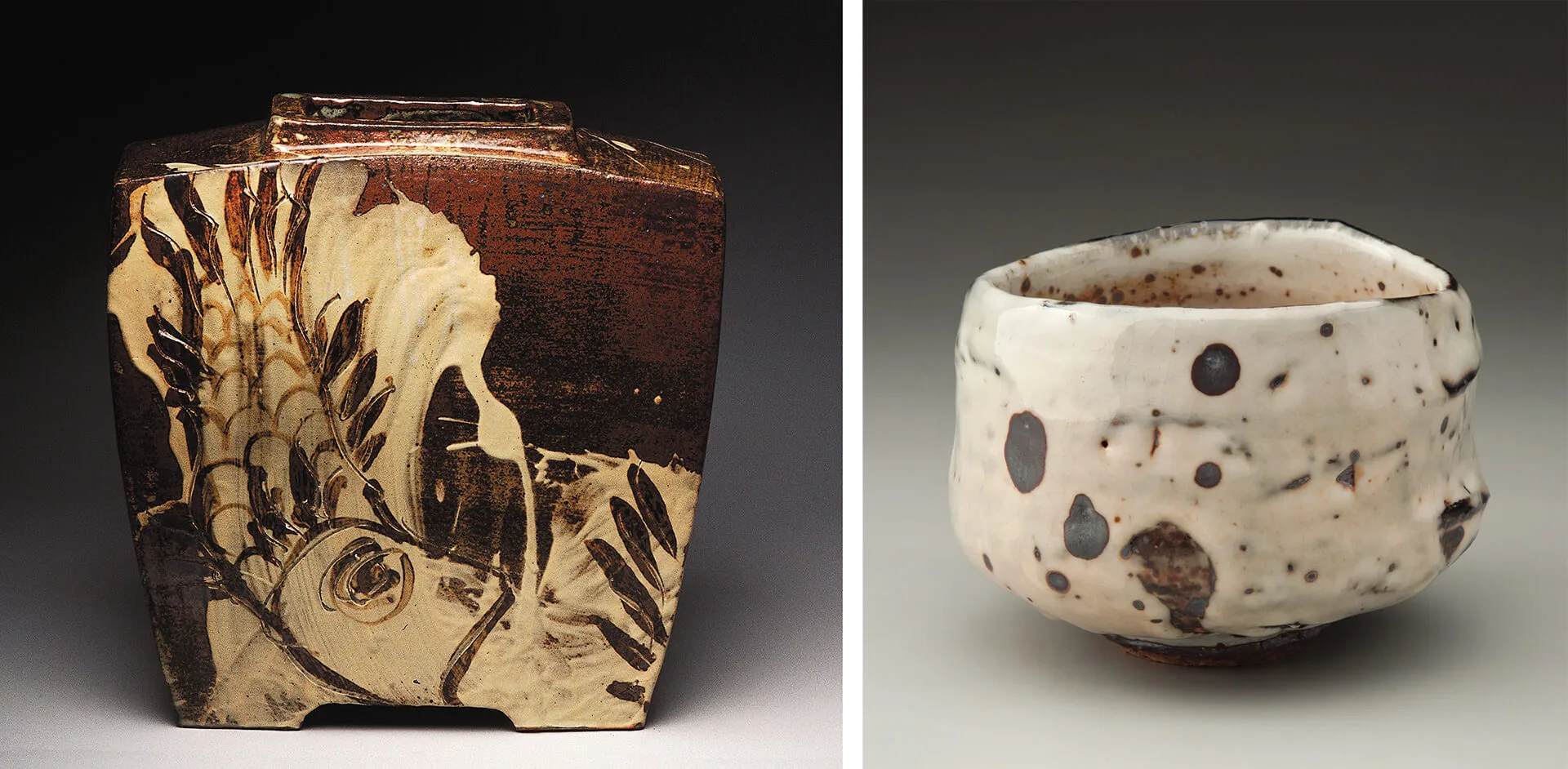 Vase and Tea Bowl. Courtesy of Ray Meeker.
Vase and Tea Bowl. Courtesy of Ray Meeker.
His artistic career has involved a prolific spectrum of works ranging from tea bowls to houses to kiln buildings and monumental sculptures. Meeker’s process departs from the traditional methods of constructing forms on a potter’s wheel or by using coils and slaps, rather he wrestles blocks of clay into brutalist chunks and uses crowbars and hammers to manifest desired forms. As one critic notes: “The surfaces of his objects retain the marks of these violent tools, the deep browns and blacks of his glazes enhance the somewhat industrial, almost alien, character of his forms. No hint of functionality corrupts these works: Meeker’s art is an uncompromising aesthetic inquiry with few ancestral references from any known compass points.”
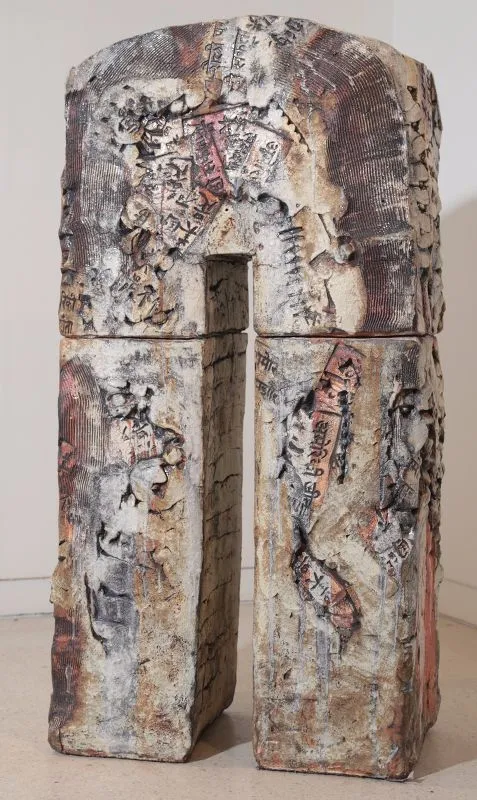 Eye of the Needle 2, 2014. Courtesy of Nature Morte.
Eye of the Needle 2, 2014. Courtesy of Nature Morte.
The theme of ecological crisis in the form of climate change as well as ways of contributing to the conservation of energy have been central to his oeuvre. For instance, Eye of the Needle 2 is part of his sculpture series which derives its title from the Bible, Matt. 19:24 which says, “It is easier for a camel to pass through the eye of a needle than for a rich man to enter the kingdom of heaven.”
Meeker is criticising the over-consumptive practices of human society, especially in the neoliberal age that should have no space in the heavenly kingdom of a healthy planet. The sculpture with its distinctive one-liners in Hindi, English, and Chinese etched across the surface, akin to graffiti scrawled along huge walls with deliberately created scars, gashes, fissures, and blemishes reminds the viewer of the ravages of time and the uncertainty of a future in a barren landscape, devoid of its original, natural glory.
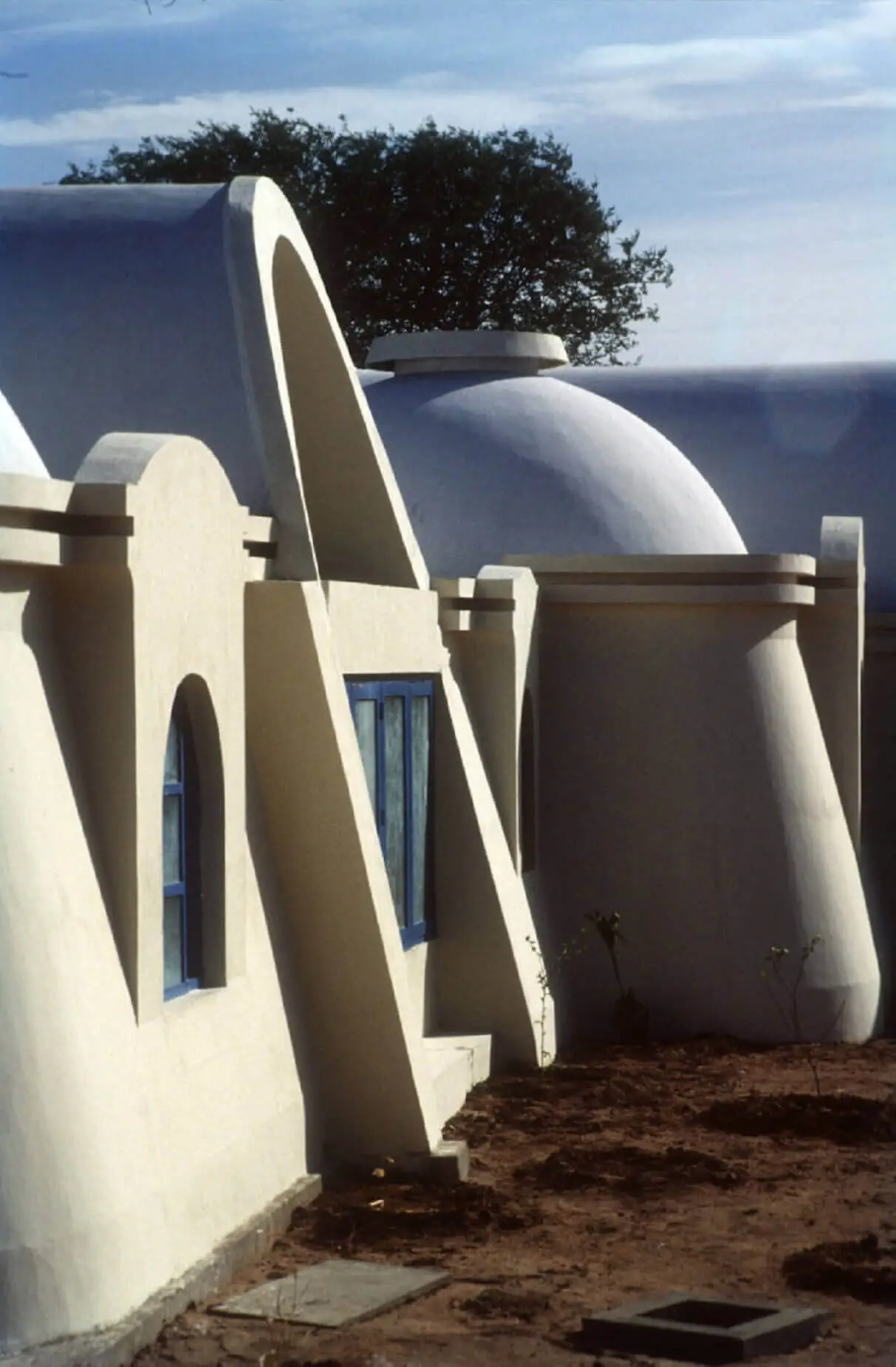 Fired House Project, Tuticorin. Courtesy of Ray Meeker.
Fired House Project, Tuticorin. Courtesy of Ray Meeker.
‘Fired houses’ have been another central feature of his eclectic career which was informed by his concerns towards creating economical, durable, and most importantly, sustainable housing, which remains a huge, unresolved problem not just in India but in many parts of the world. It was Hassan Fathy’s Architecture of the Poor which introduced him to the idea of aesthetically pleasing ‘socialistic’ housing. Simply defined, a fired house is a house primarily built using sun-dried mud bricks and mud mortar, which is then fired on-site. Meeker experimented for several years trying to develop a sustainable technique but always met with failure given the excessive fuel consumption. He also wrote a book titled Building with Fire documenting his experience and methods which was published by CEPT University Press in 2018. Eventually, he dropped the idea and moved to other avenues of pottery.
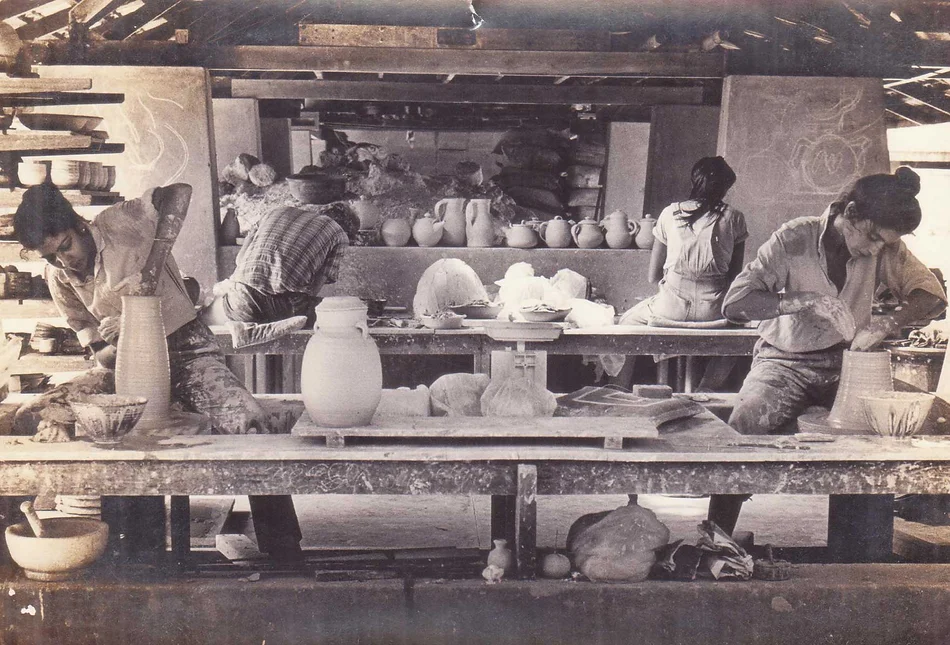 Golden Bridge Pottery. Courtesy of Ray Meeker.
Golden Bridge Pottery. Courtesy of Ray Meeker.
In addition to his own artistic career, Meeker and his partner, Deborah Smith have played a monumental role in educating and training an entire generation of contemporary ceramists in India through their organisation ‘Golden Bridge Pottery’ which was founded in Pondicherry in 1971. The organisation draws its name from a particular line that describes the goddess in Sri Aurobindo Ghose’s epic poem Savitri. It was Deborah who first encountered the teachings of Aurobindo and came to India at the Sri Aurobindo Ashram where after meeting The Mother, she was given an area to set up a glazed pottery unit as part of the ashram activities.
The organisation produces a variety of wood-fired, glazed, stoneware pottery along with offering student training and artist residencies. Their seven-month course has been in popular demand for decades and has produced several eminent ceramists who are currently practising in India and abroad like Adil Writer, Anjali Khanna, Vineet Kacker, and Amrita Dhawan. The course was geared towards producing professional potters or artists working in ceramics who would eventually set up their own studios. In doing this, the organisation also started inviting international artists since 1996 and held workshops for the local public to learn and later earn their livelihood through pottery. The efforts of Deborah and Meeker have given rise to a new craft tradition called ‘Pondicherry Pottery.’
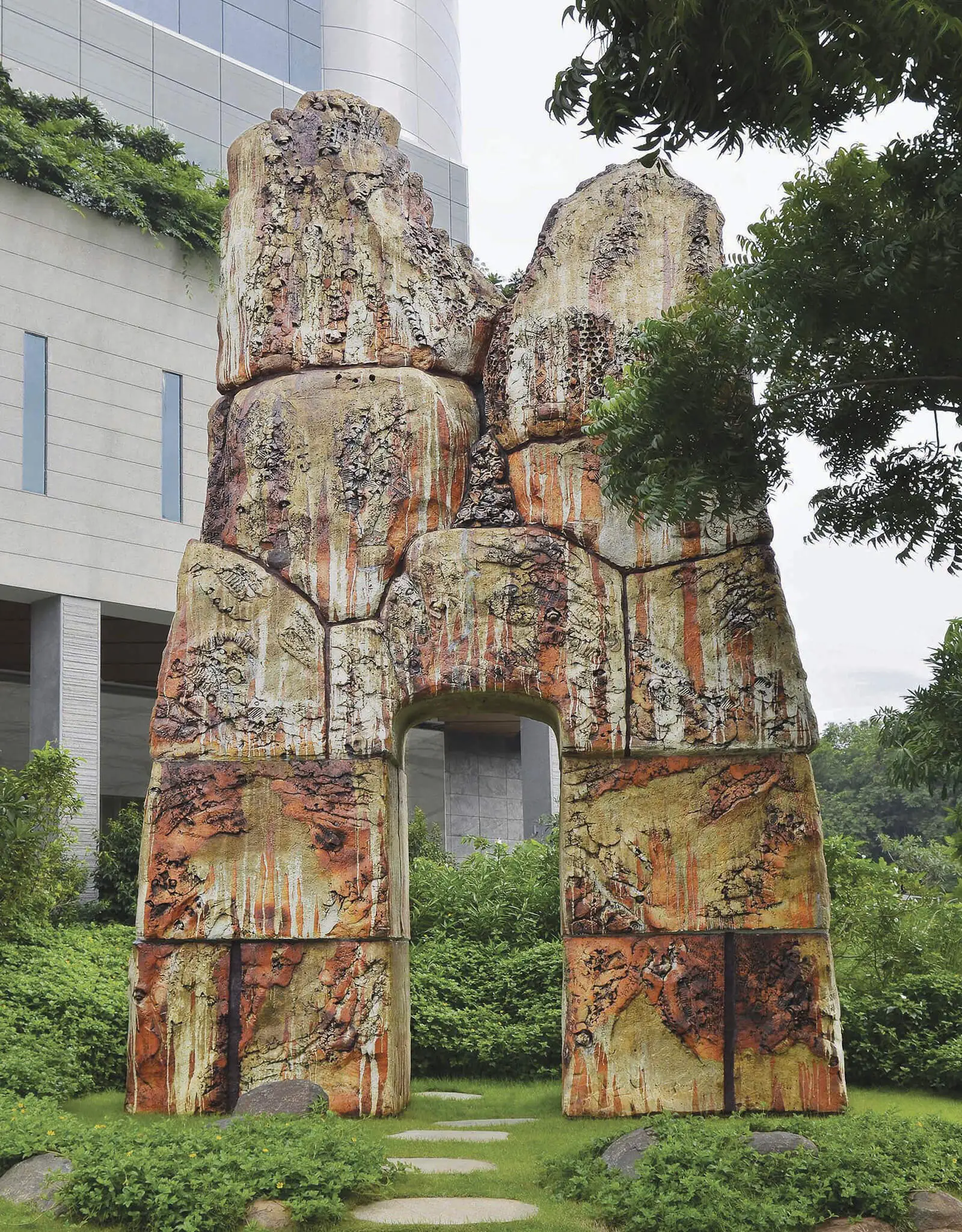 Passage. Courtesy of Ray Meeker.
Passage. Courtesy of Ray Meeker.
Despite his own achievements and that of the organisation, Meeker believes that ceramic still occupies a very low rung on the ladder of fine arts. Indians have an innate love for pottery given its cultural heritage, he says, but they still consider the potter a craftsman rather than an artist and one who is not supposed to make a lot of money. However, in the past few years, the situation is changing albeit slowly with the efforts of institutions like the Contemporary Clay Foundation which organised the first Indian Ceramics Triennale at the Jawahar Kala Kendra in 2018 that brought together thirty-six Indian artists and twelve international artists working in clay. One hopes that ceramic art and artists receive greater public and academic attention in the coming years so that artists like Ray Meeker and their contributions can be gauged critically.
By Digvijay Nikam
References
- aic-iac.org- Building with Fire: The Pioneering Work of Ray Meeker.
- Indian Express Indulge- Like a house on fire: Ceramics pioneer Ray Meeker on his new book, Building with Fire
- Architectural Digest- Ceramics and art: an interview with Puducherry-based potter Ray Meeker
- ArtBuzz: Review- ‘71 Running’ by Ray Meeker
- Golden Bridge Pottery
Read More Artist Profiles:
Tyeb Mehta : Distorting Canvas to Reconfiguring Space and Subjects
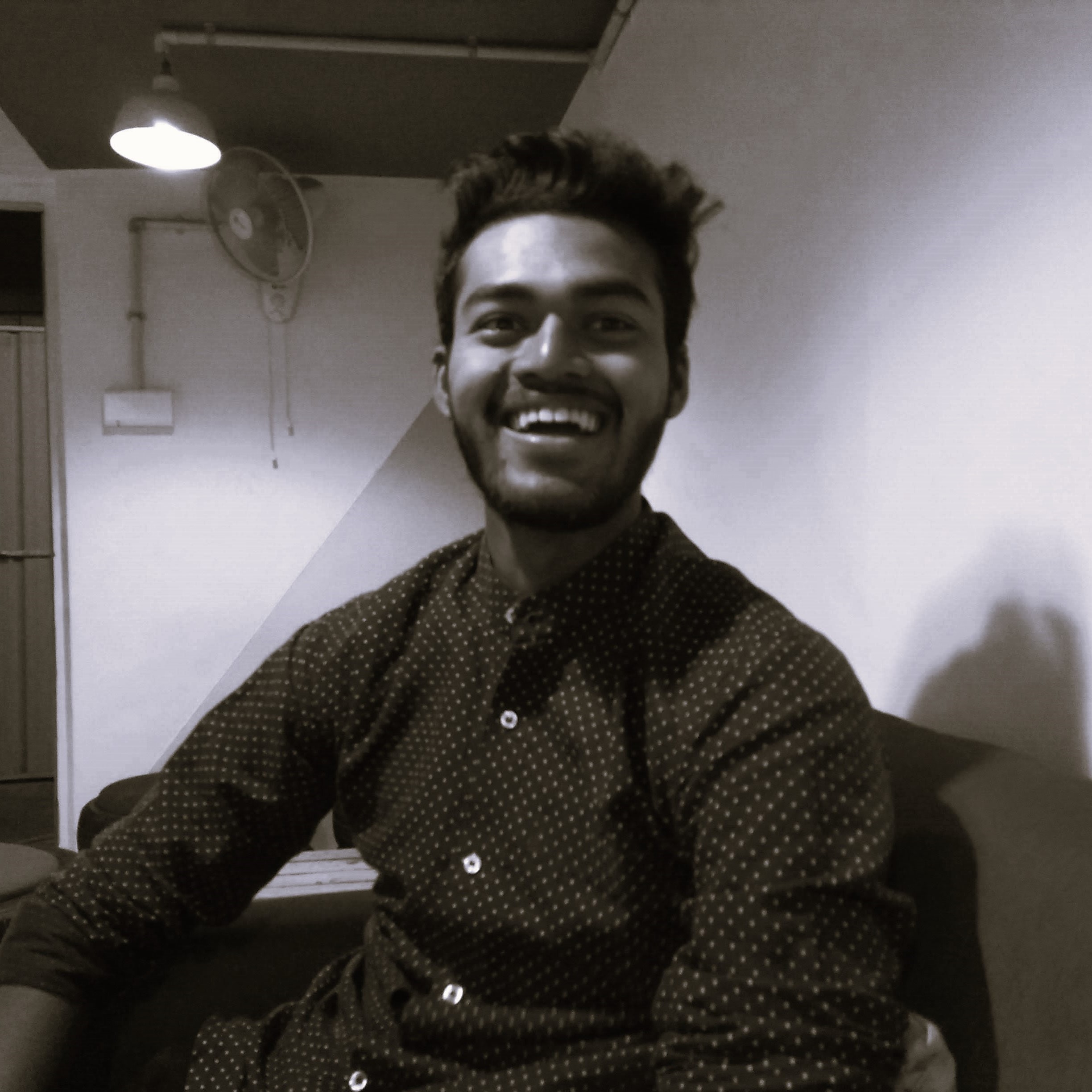
Contributor


